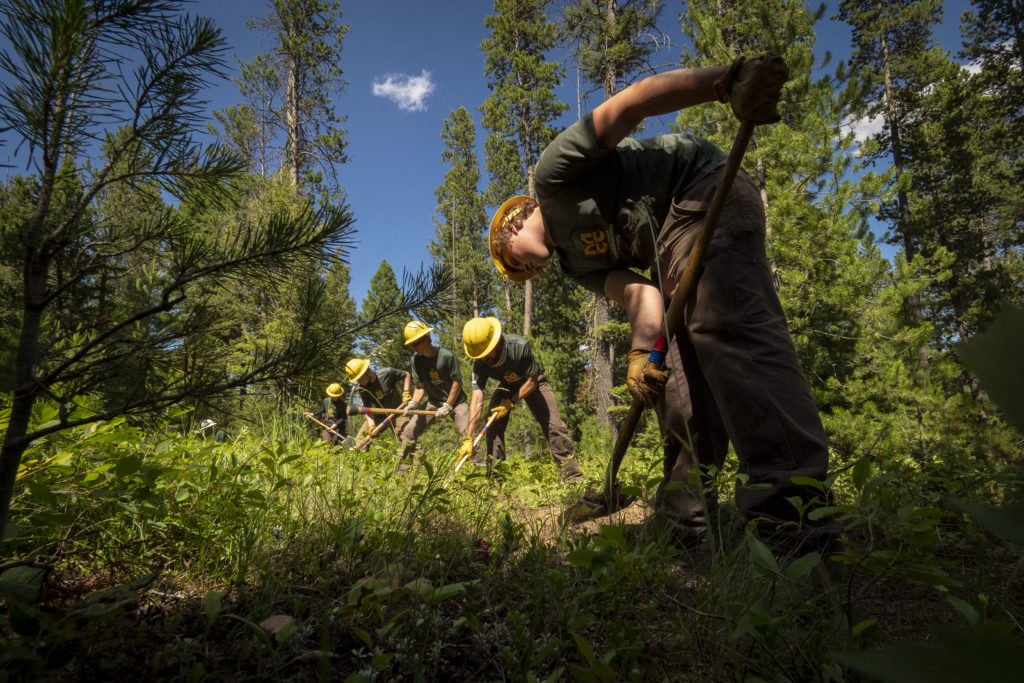Last updated on February 10th, 2024

For a challenge as great as climate change, there are no silver bullets. Right now, much of the conversation on solutions focuses on curbing greenhouse gas emissions through investment in renewable energy, electric vehicles, and low-carbon construction. These are vital strategies for addressing climate change, but the critical role conservation of natural and working lands plays in mitigating climate change is often left out of this discussion.
There are many benefits associated with land and water conservation. Taking action to protect and restore our forests, grasslands and coastal wetlands provides habitat for wildlife, improves water quality, and makes communities more resilient to extreme weather and storm events – all while creating jobs. At the same time, conservation is an important climate change strategy. Forests, grasslands and coastal wetlands draw in and store carbon from the atmosphere. Conservation actions can increase how much these ecosystems take in and prevent the carbon they already store from being released.
U.S. Nature4Climate is highlighting conservation success stories that illustrate how conservation action is climate action. Conservation is a climate strategy that can take place everywhere – from America’s vast sagebrush steppe to New England’s lush forests. We will highlight the benefits of conserving coastal ecosystems, like salt marshes and forested tidal wetlands. These “blue carbon” ecosystems have the potential to store up to 25 million tons of carbon dioxide a year, while also providing habitat for fish and other marine species, stabilizing shorelines, and supporting recreational and commercial fishing.
Additions to and sustainable management of America’s national parks, forests, monuments, and wildlife refuges are a key part of our conservation and climate action story too. For instance, the Angeles National Forests provides clean water, access to nature, and jobs. At the same time, the area’s shrublands and forests store carbon equivalent to taking 2.5 million cars off the road for a year .
We will also recognize the important role that private landowners can play in our efforts to conserve lands and waters. Farmers and ranchers who sustainably manage their lands provide habitat for wildlife and sequester carbon. For example, rancher John Reed worked with The Nature Conservancy and the U.S. Fish and Wildlife Service to place a conservation easement on his land – protecting important native grassland from development.
We will highlight the leadership provided by Indigenous communities in actualizing the climate benefits of conservation action. For example, the Confederated Salish and Kootenai Tribes of the Flathead Nation implemented a climate change strategy on reservation land that helps protect ecologically important whitebark pine trees. In addition to capturing carbon, these trees provide food sources for grizzly bears and help protect water supplies to surrounding communities. Through a combination of tree planting and controlled burns, the Salish and Kootenai Tribes are helping whitebark pines survive and thrive.
Even urban parks have a role to play and can sequester nearly as much carbon per acre as tropical rainforests. Any individual park’s impact may be small, but with more than 20,000 city parks nationwide, the collective benefits add up. Meanwhile, innovative conservation projects – like Atlanta’s recently completed Cook Park – support urban infrastructure to manage water during storm surges, provide shade to cool urban heat islands, and ensure more equitable access to nature and recreation for millions of people
So yes, conservation is climate action.
Please visit our new Conservation IS Climate Action campaign page, and the U.S. Nature4Climate blog to learn more about the powerful role conservation can play in addressing climate change.
Andy Jackson is a Research & Communications Fellow at U.S. Nature4Climate.
